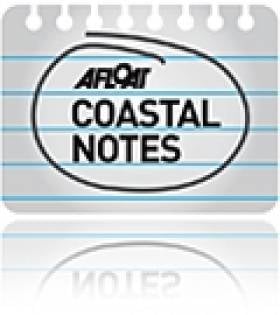Displaying items by tag: memories
Fond Memories of Guinness Barges on the Liffey
#INLAND WATERWAYS - As Derek Evans writes in The Irish Times, the recent discovery of the first Guinness merchant vessel - sunk a century ago by a German torpedo in the Irish Sea - rekindled memories of the brewery's boats on the Liffey in the 1950s.
He writes: "Living close to Stoneybatter, I often took time to stand on Queen Street Bridge as the barges, filled with Guinness barrels, slowly made their way from James’s Gate to Sir John Rogerson’s Quay.
"I remember clearly the skipper standing beside the open wheelhouse in his navy blue polo-neck jumper, captain’s hat and pipe... The skipper always had a smile and a wave before he would disappear for a few moments under the white cloud."
He also recalls the hoisting of the barrells at Butt Bridge onto the Guinness cargo vessels - like the WM Barkley, the Lady Grania or Gwendolen Guinness - for transport to Liverpool.
As previously reported on Afloat.ie, the wreck of the WM Barkley was captured in high-resolution images taken from the national research vessel RV Celtic Voyager off the coast of Dublin.
The Irish Times has more on the story HERE.
New Book Documents History of Down Coastal Towns
#COASTAL NOTES - A new book detailing the "colourful history" of Helen's Bay and Crawfordsburn in north Down has been launched, the News Letter reports.
Twixt Bay & Burn features a number of rare photographs among interesting and little-known facts about the coastal area from the 17th century to today.
Also documented in its pages are the memories of over 50 residents going back to the 1920s, highlighting the area's contributions to the Second World War effort.
Robin Masefield, who compiled and edited the book, described it as a "labour of love".
The News Letter has much more on the story HERE.
Haughey's Celtic Mist: A Stormy History
The Irish Independent today recounts the tumultuous history of the Celtic Mist - the yacht once owned by the late former Taoiseach Charles Haughey that recently took part in the Tall Ships Races has now begun a new life as a research vessel with the Irish Whale and Dolphin Group (IWDG).
"But as the boat continues to ride the waves off the west coast of Ireland it will forever be associated with the shenanigans of 'Champagne Charlie'," writes John Costello.
Though controversial for many - from its purchase in 1987 and its subsequent lavish outfitting to the extravagance of the lobster and vintage wine that were always available on board - there are also fond memories, particularly in Dingle, where Haughey helped to transform the harbour.
And who can forget the time when Loyalist terrorists threatened to blow up the yacht in a bid to avenge the death of Lord Mountbatten?
The Irish Independent has more on the Celtic Mist's storied past HERE.
































































